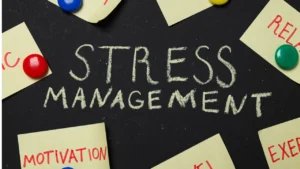Stress is a part of our daily lives, but managing it doesn’t have to feel overwhelming. With the right tools and habits, reducing stress naturally is more achievable than you might think. Mindfulness, a practice that has its roots in ancient traditions, has become one of the most effective ways to help people find calm amidst chaos.
Understanding Mindfulness and its Role in Stress Reduction
Mindfulness is the act of being fully present in the moment, aware of your thoughts, feelings, and surroundings without judgment. By helping you bring your focus back to the present, mindfulness allows you to step away from the stressful thoughts that often dominate your mind.
Being mindful doesn’t mean ignoring problems; rather, it helps you approach them calmly and clearly. Studies have shown that regular mindfulness practices can significantly reduce cortisol, the stress hormone, and improve overall mental well-being.
Key Mindfulness Practices Explained
Different mindfulness techniques target various aspects of stress and relaxation. Meditation, for example, helps train your mind to focus and quiet itself, while deep breathing calms your nervous system. Yoga combines movement with mindfulness, offering both physical and mental relaxation.
Here’s a quick snapshot of some of the most effective mindfulness practices:
Meditation encourages stillness and focus. Sitting in a quiet place and concentrating on your breath or a specific word (called a mantra) helps center your thoughts and calms the mind.
Deep Breathing Exercises directly soothe your body’s stress response. By slowing down your breathing and making it intentional, you activate the parasympathetic nervous system, which promotes relaxation.
Yoga integrates movement and mindfulness. Poses help reduce physical tension, while breathing and focus bring an inner sense of calm.
Body Scanning helps you tune into physical sensations. By mentally “scanning” your body for areas of tension, you can bring awareness and release stress from specific muscles.
Visualization invites you to imagine a peaceful setting, like a beach or forest. This mental escape shifts your thoughts from stress to tranquility and can be done almost anywhere.
How to Incorporate Mindfulness Practices into Daily Life
Integrating mindfulness into your routine is easier than it seems. Start with short, five-minute practices and gradually build from there. For example:
- Morning Rituals: Begin your day with three deep breaths or a short meditation to set a calm tone for the day.
- Mindful Breaks: During work, take a moment to pause, stretch, and breathe mindfully. These breaks can recharge your focus.
- Bedtime Calm: Spend 10 minutes meditating or doing a body scan before bed to release the tensions of the day.
Remember, mindfulness doesn’t have to be formal. Simply focusing on your breathing while waiting in line or being fully present while sipping your coffee can count as mindfulness.
Science-Backed Benefits of Mindfulness for Stress Relief
The benefits of mindfulness are rooted in science. Researchers have consistently found that practicing mindfulness leads to:
- Reduced Anxiety and Stress: By lowering cortisol levels and interrupting racing thoughts, mindfulness helps reduce feelings of anxiety and overwhelm.
- Improved Focus and Clarity: Mindfulness enhances cognitive function, helping you stay present and make better decisions.
- Better Emotional Regulation: Regular mindfulness practice encourages calm and balance, making it easier to respond instead of reacting to stressors.
- Enhanced Physical Health: Mindfulness can lower blood pressure, reduce symptoms of chronic pain, and boost immunity.
The following chart summarizes the effects of mindfulness practices based on scientific studies:
|
Practice |
Primary Benefit |
Additional Benefit |
|---|---|---|
|
Meditation |
Reduces mental noise and anxiety |
Enhances focus and emotional clarity |
|
Deep Breathing |
Calms the nervous system |
Lowers heart rate and blood pressure |
|
Yoga |
Eases physical tension |
Improves flexibility and posture |
|
Body Scanning |
Promotes muscle relaxation |
Boosts bodily awareness |
|
Visualization |
Provides mental escape |
Encourages creativity and calmness |
Real-Life Examples of Mindfulness Success
Countless individuals have adopted mindfulness practices and noticed transformational changes in their lives. Consider Rachel, a project manager who used daily meditations to handle high-pressure deadlines. Instead of feeling overwhelmed, she found herself approaching challenges with clarity and a calm mindset.
Then there’s David, a small business owner who struggled with insomnia due to stress. By incorporating nightly body scans and mindful breathing, he began sleeping better, which in turn improved his focus and productivity.
Even organizations are recognizing the value of mindfulness, with companies like Google and Apple offering mindfulness programs to their employees, resulting in improved job satisfaction and reduced burnout.
Start Reducing Stress Today with Mindfulness
Mindfulness isn’t just a trend; it’s a proven path to natural stress reduction. By practicing techniques like deep breathing, meditation, and yoga, you can cultivate a sense of calm and control in your daily life. Remember, even a few minutes of mindfulness each day can have lasting benefits.
Why not give it a try? Begin with a simple breathing exercise or a 5-minute meditation session, and notice the difference it makes. Start small, stay consistent, and watch as mindfulness transforms how you respond to stress.
FAQ
1. Is mindfulness hard to learn?
Not at all! Mindfulness is accessible to everyone, regardless of experience. Start small and gradually increase your practice.
2. Do I need special equipment for mindfulness?
No, mindfulness can be practiced anywhere. A quiet space is helpful but not necessary.
3. How fast will I see results?
Some benefits, like feeling calmer, can be immediate, while others, like improved focus and reduced stress, develop over weeks of regular practice.
4. Can children practice mindfulness too?
Yes, mindfulness can benefit all ages. Simple techniques like belly breathing are great for kids.
5. Are there apps to help with mindfulness?
Absolutely! Apps like Headspace, Calm, and Insight Timer provide guided exercises to get started.




